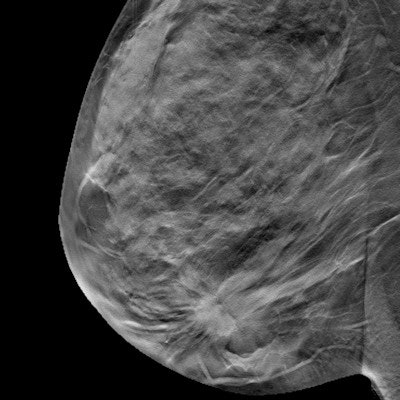
Shifting breast screening from digital mammography to digital breast tomosynthesis (DBT) reduces recall rates, but it achieves only modest improvements in breast cancer deaths averted or life years saved -- while costing above commonly accepted cost-effectiveness ranges, according to research published online September 10 in the Journal of the National Cancer Institute.
The results demonstrate that DBT's cost/benefit ratio remains in flux, even as it becomes increasingly integrated into clinical practice, wrote a team led by Dr. Kathryn Lowry of the University of Washington in Seattle.
"Our estimates suggest that given current screening patterns in the U.S., the use of DBT reduces false-positive exams while maintaining or slightly improving mortality and quality of life outcomes," the authors wrote. "The additional costs incurred relative to these benefits are high compared with commonly accepted thresholds, although the use of DBT screening could be cost-effective at lower reimbursement rates."
Rapid uptake
Despite the rapid implementation of DBT into clinical practice, the impact of transitioning from digital mammography to DBT on long-term costs and health benefits is unclear, according to Lowry and colleagues. The team sought to investigate the technology's cost and benefits in the general screening population using three Cancer Intervention and Surveillance Modeling Network (CISNET) breast cancer models to simulate U.S. women 40 years or older undergoing breast cancer screening with either DBT or digital mammography starting in 2011 and continuing until they were 80.
The researchers incorporated DBT screening performance data from previous studies into the models, and they tracked breast cancer deaths, quality-adjusted life years (QALYs), false-positive examinations, costs, and incremental cost-effectiveness ratios (ICERs). Screening costs for digital mammography and DBT were based on 2018 Medicare reimbursement rates of $140.14 for digital mammography and an additional $56.16 for DBT (total for digital mammography plus DBT, $196.56).
Compared with digital mammography, DBT reduced false positives by 24% to 28% across the three models. But its use resulted in only a small reduction in breast cancer deaths (0 to 0.21 deaths per 1,000 women) and a small increase in QALYs (1.97 to 3.27 per 1,000 women).
| Screening outcomes comparing digital mammography and DBT using 3 models | |||
| Outcomes (per 1,000 simulated women 40 to 80 years old) |
Digital mammography | DBT | Difference |
| Breast cancer deaths | |||
| Model 1 | 17.08 | 16.87 | -0.21 |
| Model 2 | 12.42 | 12.41 | -0.02 |
| Model 3 | 14.81 | 14.81 | -0.0 |
| Life years | |||
| Model 1 | 26,258 | 26,259 | 1.58 |
| Model 2 | 27,906 | 27,906 | 0.21 |
| Model 3 | 28,035 | 28,035 | -0.16 |
| QALYs | |||
| Model 1 | 19,297 | 19,300 | 3.27 |
| Model 2 | 20,544 | 20,546 | 2.12 |
| Model 3 | 20,643 | 20,645 | 1.97 |
In terms of cost, the shift from digital mammography to DBT increased total costs by $395,553 to $445,722 per 1,000 screening-eligible women. Incremental cost-effectiveness ratios for DBT compared with digital mammography ranged from $195,026 to $270,135 per QALY gained. But the researchers also found that DBT's value improved if the cost of the exam from the 2018 Medicare reimbursement rate decreased.
Cost-effective?
DBT's costs are high and are above common thresholds of cost-effectiveness, which range from $50,000 to $150,000 per QALY. But various factors could improve this balance, according to Lowry.
"Our study suggests that there are clear benefits to screening with DBT compared to screening with conventional mammography," she said. "The trade-off is that right now the costs are likely relatively higher compared with digital mammography, but many factors could make DBT more cost-effective. Also, our estimates are averages for the entire population, but there may be some women who have greater benefits from DBT. There are many ongoing studies looking at the impact of DBT, and our estimates could change as new information becomes available."



















